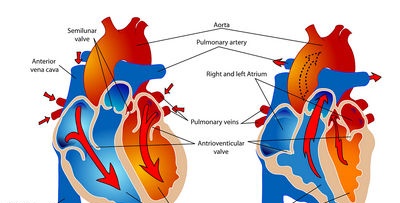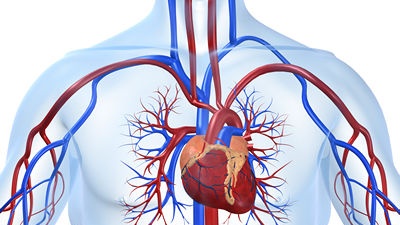|
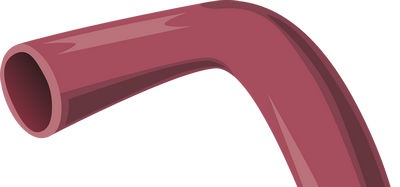 Throughout life, our body is in a state of complex interaction with the environment. From it, he receives all the necessary chemical materials and substances participating in various metabolic processes. Throughout life, our body is in a state of complex interaction with the environment. From it, he receives all the necessary chemical materials and substances participating in various metabolic processes.
So, food substances coming from outside are subject to decomposition - digestion in the gastrointestinal canal, and the products of such digestion are absorbed into the blood and undergo further transformations in tissues, providing their nutrition and function.
Of particular importance is the supply of oxygen to the body, which flows through the lungs into the blood during breathing. Oxygen provides tissue respiration, that is, the oxidation of all kinds of products that serve to nourish tissues and generate energy.
For the implementation of these functions - nutrition, respiration, heat generation - it is necessary that all substances entering the body and undergoing complex chemical transformations are continuously delivered directly to the tissues. This transport function is the main task of the circulatory system.
Throughout a person's life, blood flows in blood vessels, supplying all tissues with nutrients and oxygen. The blood also receives metabolic products from the tissues, which must be removed through the excretory organs.
The constant flow of blood through the blood vessels occurs due to the continuous work of the central contractile muscle organ - the heart, which plays the role of a pump that drives blood through the blood vessels.
A particularly important section of the circulatory system is its arterial part. Blood flows through the arteries to all organs and tissues, carrying nutrients and oxygen.
The largest of the arteries, the aorta, departs directly from the heart (from its left ventricle) and gives off numerous arteries, which, gradually branching out, supply blood to the entire body. In the direction from the heart to the periphery, to the tissues, these vessels become narrower and finally pass into the hair (capillary) vessels, through which nutrients are absorbed.
Having taken waste substances from the cells, the blood returns back to the heart through the venous system. The latter begins in the tissues in the form of small vessels emanating from the capillaries. Gradually expanding and merging with each other, these vessels form ever larger venous branches, and the largest of them - the superior and inferior vena cava - flow into the right atrium of the heart,
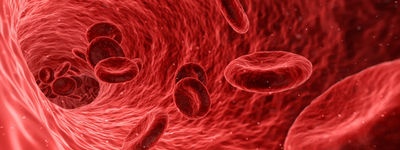 It must be borne in mind that this entire complex system of blood vessels is not a network of unchanging, lifeless formations. The walls of blood vessels are themselves made up of living tissues - cells and fibers. Therefore, they are subject to various changes under the influence of the general regulatory systems of the body, especially the nervous system and endocrine glands. In addition, painful (pathological) changes in their structure and functions very often occur in the walls of blood vessels. These changes occur due to various pathogenic effects, for example, in metabolic disorders in tissues, as a result of the harmful effects of microbes, etc. It must be borne in mind that this entire complex system of blood vessels is not a network of unchanging, lifeless formations. The walls of blood vessels are themselves made up of living tissues - cells and fibers. Therefore, they are subject to various changes under the influence of the general regulatory systems of the body, especially the nervous system and endocrine glands. In addition, painful (pathological) changes in their structure and functions very often occur in the walls of blood vessels. These changes occur due to various pathogenic effects, for example, in metabolic disorders in tissues, as a result of the harmful effects of microbes, etc.
In this brochure we will be interested in diseases affecting the arterial system, that is, that part of the circulatory system through which blood flows continuously from the heart to the tissues. Continuity of blood flow is ensured, as indicated, by the contractions of the heart, which sends blood to the arteries. As a result, high blood pressure is constantly maintained in the arteries, equal to an average of 120-140 mm Hg.
But for regular and continuous blood flow from the heart to the periphery, to organs and tissues, in addition to the pumping function of the heart, some additional conditions are necessary. First of all, the tubular system of the arteries should be well-passable for blood, that is, there should be no obstacles in it that delay or stop normal blood flow.
Further, the walls of the arteries should have significant elasticity, expanding somewhat and falling again when the pulse waves that arise as a result of heart contractions pass through the arteries. The elasticity of the arterial tubes is an important circulatory aid to promote blood flow.
Another main property of arterial vessels is the ability of their walls to contract, which causes narrowing of the lumen of the arteries. These contractions are due to the presence of numerous muscle fibers embedded in the walls of blood vessels, mostly located in a circular manner.
For the largest arteries, their elasticity is especially characteristic, and for medium and small - the ability of their walls to actively contract and expand again. In this case, the lumen of the vessel changes accordingly - narrows or expands. Such changes in the lumen of blood vessels are provided by the nervous system. Each artery is abundantly supplied with fine nerve fibers; nerve impulses pass through them, regulating the width of the vessel lumen.
The ability of arteries to contract and change the lumen is essential for the blood supply to tissues. In this way, there is now a larger, then a smaller flow of blood to the tissues. A sharp sudden contraction (spasm) of the arteries can cause even such a strong exsanguination of a tissue site that sometimes its death occurs. The death of a part of an organ due to the closure of an artery supplying this part with blood for various reasons has one common name - a heart attack, for example, a heart attack of the heart muscle (myocardium), a lung, kidney, etc.
In addition to the above basic properties of blood vessels - their elasticity and contractility - there is another very important feature of their walls, namely, partial permeability to liquid components of blood. This property is inherent especially in the smallest blood vessels - capillaries. Their wall is so thin and permeable that through it there is a constant exchange of fluids, as well as substances dissolved in them between blood and tissues. Such a constantly occurring interchange of fluids between blood and tissues serves for the normal nourishment of tissues, supplying them with oxygen, as well as for removing various products of tissue metabolism.
However, it cannot be assumed that the permeability of the wall for the constituent parts of the blood is characteristic only of capillaries. To a certain extent, it is also inherent in arteries. If some harmless colloidal dye is injected into the blood of an animal during life, it turns out that the wall of the arteries is painted over in this color: the paint penetrates to a certain depth into the wall of the vessel.
What is the structure of the walls of arterial vessels? If we consider thin sections (plates) of the walls, we can see that they consist of three shells closely adjacent to each other. Each artery is not a simple, single tube, but rather three tubes inserted into one another. Let us dwell briefly on the structure of these three tubes that make up the wall of each artery.
The innermost tube, through which blood flows directly, is lined with a thin layer of perfectly flat cells. Outside of this layer, fibers lie interspersed with elongated cells; both make up the tissue of the inner tube, or, as we call it, the inner lining of the arteries. The inner membrane in different arteries of unequal thickness, it is thickest in large ones and gradually becomes thinner towards the arteries of a smaller diameter.
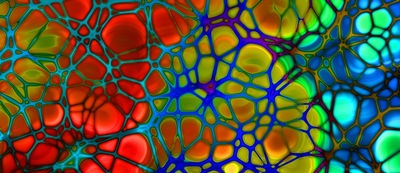 The most characteristic of the vessels of the arterial system is that their inner shell, especially in the arteries of large and medium caliber, gradually thickens with age (for example, in the vessels of the heart, kidneys, brain, etc.). This thickening is due to the development of new fibers and cells and sometimes reaches such a sharp degree that the membrane becomes the most powerful of all three layers over the years. Many scientists believe that this circumstance is in a certain way connected with the fact of extremely frequent lesions of the coronary arteries of the heart by atherosclerosis. But this age-related thickening of the walls should not be confused with pathological thickening of the inner lining, especially characteristic of a very common arterial disease - atherosclerosis. The most characteristic of the vessels of the arterial system is that their inner shell, especially in the arteries of large and medium caliber, gradually thickens with age (for example, in the vessels of the heart, kidneys, brain, etc.). This thickening is due to the development of new fibers and cells and sometimes reaches such a sharp degree that the membrane becomes the most powerful of all three layers over the years. Many scientists believe that this circumstance is in a certain way connected with the fact of extremely frequent lesions of the coronary arteries of the heart by atherosclerosis. But this age-related thickening of the walls should not be confused with pathological thickening of the inner lining, especially characteristic of a very common arterial disease - atherosclerosis.
The inner lining of the arteries is, as it were, inserted into a wider tube - the middle membrane, which is separated from the first thin elastic membrane - a membrane, or internal elastic plate.
The middle lining of the arteries is built in different ways in different arteries. In larger (elastic-type arteries), it is especially rich in elastic membranes (plates), as if enveloping the artery with several membranes. Between the latter are muscle, thinner elastic and other fibers. In arteries of medium and small caliber, this sheath is built mainly of many smooth muscle fibers (cells) of a fusiform shape, concentrically layered on top of each other (muscle-type arteries). The general state of tension (tone) of the walls of small vessels of the muscular type is essential for maintaining blood pressure at a certain height.
The middle lining of the arteries is the thickest and most powerful sheath in the arterial wall. Outside, in many arteries, this sheath is delimited by a thin elastic membrane, or an external elastic plate.
Outside the middle lining of the arteries there is another one - the outer sheath, or outer sheath, that surrounds the vessel and connects it with the surrounding tissues.
The outer shell consists of more or less loosely arranged fibers and cells, and, most importantly, it contains small blood vessels that supply blood and nourish the wall of the arteries. These are the so-called "vascular vessels" through which the blood supply to the outer shell and two-thirds of the middle shell of large arteries occurs. The inner parts of the middle membrane, as well as the entire inner membrane of the large arteries, are devoid of feeding vessels. Their nutrition occurs by the constant seepage of fluid from the blood, which is in the very lumen of the arteries.
Thus, the property of permeability, which serves to nourish tissues, is not only a property of hair vessels - capillaries, but to some extent is also characteristic of other blood vessels, including even the largest arteries.
N. N. Anichkov - Diseases of the arteries
|
 Throughout life, our body is in a state of complex interaction with the environment. From it, he receives all the necessary chemical materials and substances participating in various metabolic processes.
Throughout life, our body is in a state of complex interaction with the environment. From it, he receives all the necessary chemical materials and substances participating in various metabolic processes. It must be borne in mind that this entire complex system of blood vessels is not a network of unchanging, lifeless formations. The walls of blood vessels are themselves made up of living tissues - cells and fibers. Therefore, they are subject to various changes under the influence of the general regulatory systems of the body, especially the nervous system and endocrine glands. In addition, painful (pathological) changes in their structure and functions very often occur in the walls of blood vessels. These changes occur due to various pathogenic effects, for example, in metabolic disorders in tissues, as a result of the harmful effects of microbes, etc.
It must be borne in mind that this entire complex system of blood vessels is not a network of unchanging, lifeless formations. The walls of blood vessels are themselves made up of living tissues - cells and fibers. Therefore, they are subject to various changes under the influence of the general regulatory systems of the body, especially the nervous system and endocrine glands. In addition, painful (pathological) changes in their structure and functions very often occur in the walls of blood vessels. These changes occur due to various pathogenic effects, for example, in metabolic disorders in tissues, as a result of the harmful effects of microbes, etc. The most characteristic of the vessels of the arterial system is that their inner shell, especially in the arteries of large and medium caliber, gradually thickens with age (for example, in the vessels of the heart, kidneys, brain, etc.). This thickening is due to the development of new fibers and cells and sometimes reaches such a sharp degree that the membrane becomes the most powerful of all three layers over the years. Many scientists believe that this circumstance is in a certain way connected with the fact of extremely frequent lesions of the coronary arteries of the heart by atherosclerosis. But this age-related thickening of the walls should not be confused with pathological thickening of the inner lining, especially characteristic of a very common arterial disease - atherosclerosis.
The most characteristic of the vessels of the arterial system is that their inner shell, especially in the arteries of large and medium caliber, gradually thickens with age (for example, in the vessels of the heart, kidneys, brain, etc.). This thickening is due to the development of new fibers and cells and sometimes reaches such a sharp degree that the membrane becomes the most powerful of all three layers over the years. Many scientists believe that this circumstance is in a certain way connected with the fact of extremely frequent lesions of the coronary arteries of the heart by atherosclerosis. But this age-related thickening of the walls should not be confused with pathological thickening of the inner lining, especially characteristic of a very common arterial disease - atherosclerosis.
